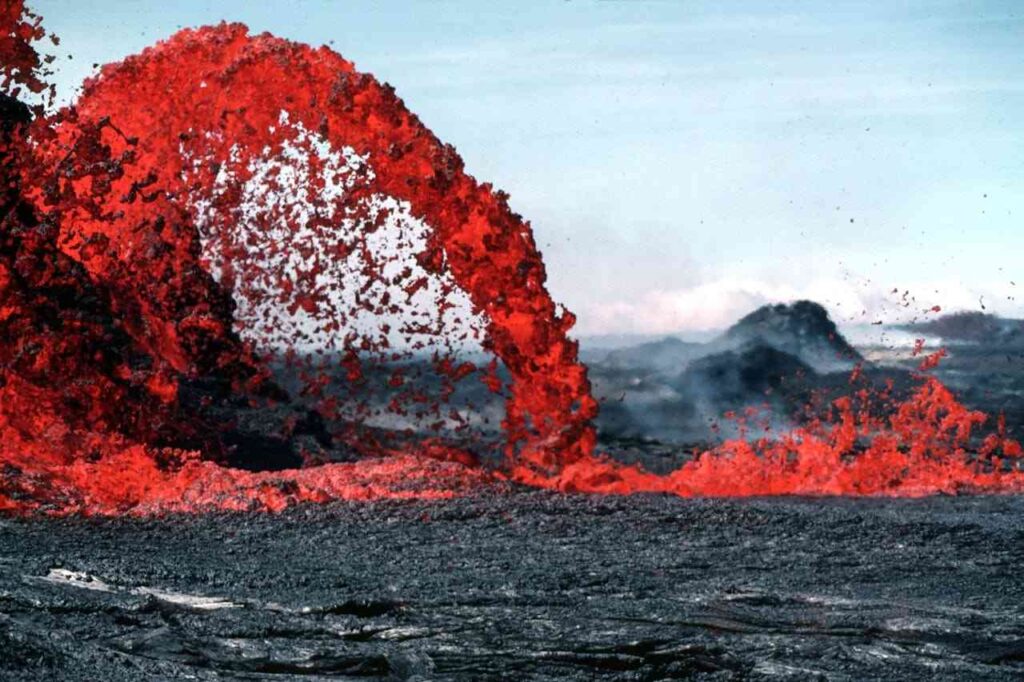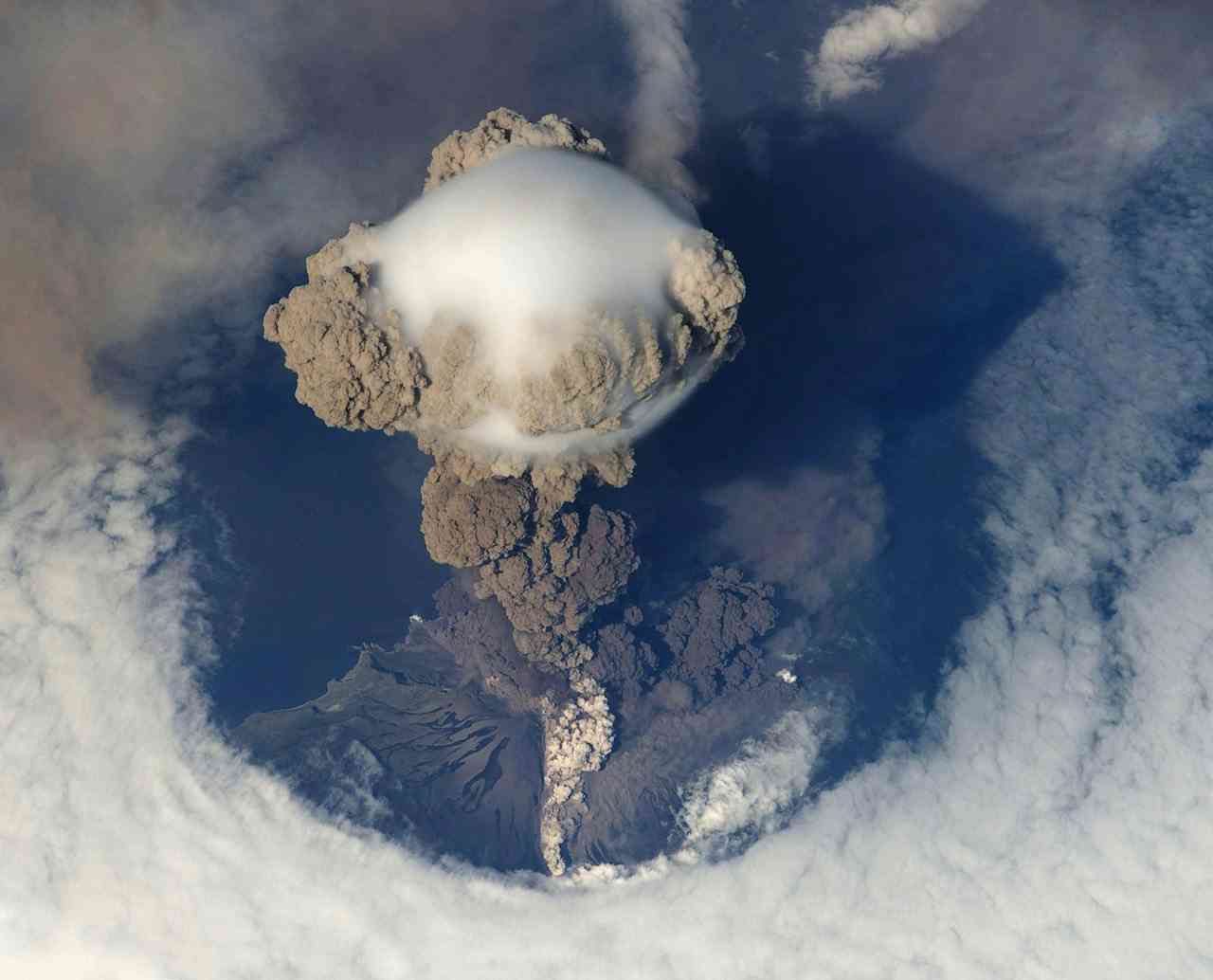A group of researchers in Japan discovered the world’s largest volcanic eruption happened underwater about 7300 years ago. Mount Tambora in 1815 was considered as the largest volcanic eruption until now. The Tambora eruption caused significant climate changes, leading to the “Year Without a Summer” in 1816. Volcanologist suggests explosion produced by Kikai-Akahoya is over 3 times the amount of material excreted by Mount Tambora.
Volcanology is a scientific study that includes understanding their formation, behavior, and the processes associated with volcanic activity. Volcanologists investigate the types of rocks and minerals volcanoes produce, the gases emitted during eruptions, and geological structures.
Volcanoes not only spew out hot lava but also shoot out lots of pumice, ashes, and gases in a fast flow called “pyroclastic flow“. The sediment from these flows holds valuable information about past volcanic eruptions. While scientists understand how this sedimentation works for land volcanoes, it’s tricky because the sediments often get lost due to erosion.
For volcanoes on islands or close to the coast, the process of how pyroclastic flows settle is not well understood. This is because the interaction with water is not clear, and getting reliable data is hard. Because of these challenges, it’s tough to figure out how many past eruptions affected the climate and history.
Largest volcanic eruption before the survey

Before the survey by Kobe University, the volcanic eruptions in Indonesia were considered as the largest volcanic eruption of Holocene era. The Holocene is the current geological era that began around 11,700 years ago after the last major ice age. The early Holocene era experienced warming temperatures as Earth transitioned from glacial to interglacial conditions.
Mount Tambora caused the deadliest volcanic eruption in recent history, taking the lives of around 120,000 people. It erupted on April 10, 1815, sending ash 40km high and causing a drop in global temperatures due to a large amount of SO2 emitted. This resulted in crop failures and thousands of deaths in China.
The second most powerful eruption occurred in Indonesia on August 27, 1883, when Krakatoa erupted, destroying the entire island. Massive explosions tore the volcano apart, and the final eruption was four times stronger than the largest human-made bomb. Tsunamis caused by the eruption killed about 36,000 people and wiped out villages.
The third-largest eruption happened in Laki, Iceland in 1783, claiming 10,000 lives. Lasting for 8 months, it released 14.7 km3 of lava, poisoning crops and killing 60% of Iceland’s livestock. The SO2 released caused acid rain and a drop in global temperatures. The toxic eruption also traveled to Britain, killing 23,000 people, and causing a famine in Egypt.
Kikai Caldera history
The Kikai Caldera, also known as Kikaiga-shima, is a huge underwater crater. It is located in the Ōsumi Islands of Kagoshima Prefecture, Japan. The Kikai Caldera Complex has two oval-shaped craters, measuring about 20 km by 17 km. The caldera started forming at least 140,000 years ago due to the eruption of Koabiyama pyroclastic flows. Around 6,300 years ago, Kikai volcano had a massive eruption. It greatly affected southern and central Kyushu, forming the present-day caldera.
Researchers team
The article was published by “The Journal of Volcanology and Geothermal Research” on 1 Feb 2024. Four institutes have contributed to this amazing research and discovery.
- Department of Planetology, Kobe University
- Kobe Ocean-Bottom Exploration Center, Kobe University
- Nippon Marine Enterprises Ltd; Yokosuka
- Seisgadget Ltd; Tokyo
Fukae Maru and Shinsei Maru help in collecting data and samples which was valuable. Satoshi Shimizu and Nobukazu Seama has researched the data and published the paper. Kobe University is a big school in Japan that started in 1902 as the Kobe Commercial School. Now, it has about 16,000 students and 1,700 teachers in 10 different areas of study. It’s a top research university that teaches a variety of subjects. Kobe University uses knowledge and creativity to solve problems in society.
Evidences found about the largest volcanic eruption

Between 2016 and 2019, researchers from Kobe University used a ship named Fukae Maru to conduct surveys of the Earth’s subsurface using seismic reflection. They used specialized equipment, including a mini-GI gun and a hydrophone streamer, to capture detailed images. The gun and streamer were towed just below the sea surface at specific depths to ensure high-quality data.
The team from Kobe University, led by Nobukazu Seama and Satoshi Shimizu, went on a research expedition using ship Fukae Maru. They did seismic imaging and collected sediment samples around the Kikai Caldera, which is located off the southern coast of Japan’s Kyushu Island.
In this research, they found evidence of deposits formed by a dense current in water that resulted from the 7300 years ago volcanic eruption creating the Kikai-Akahoya caldera. They used detailed marine surveys and chemical analyses of volcanic materials collected by a remotely operated vehicle.
Seama explains that understanding big volcanic eruptions, like those not experienced in modern times, relies on studying old deposits. It’s been tough to accurately measure eruption sizes. Since a lot of volcanic material on land has been eroded away.
Their research revealed a volcanic eruption from 7,300 years ago that covered an area bigger than 4,500 square kilometres around the eruption spot. The on-land ignimbrite (a type of volcanic deposit) was about 5 cubic kilometres and the scattered tephra (volcanic ash) was 249–374 cubic kilometres. According to their calculations, the overall volume of the Kikai-Akahoya eruption is estimated to be between 332 and 457 cubic kilometres.
Scientists studied the sediments on the ocean floor and nearby islands to understand how volcanic ash flows interact with water. They found that the underwater part of the flow traveled a surprisingly long distance and even went uphill, which goes against what was traditionally believed.
Conclusion
The Akahoya eruption, also known as the Kikai-Akahoya eruption, was the most powerful volcanic eruption ever recorded at the Kikai Caldera in Kyushu, Japan. It spewed out a massive amount of volcanic material, estimated to be 332-457 cubic kilometres, earning it a Volcanic Explosivity Index of 7. This suggests that it is likely the most significant volcanic eruption in the Holocene period(current era).
Read more: Dinosaur era plant “Wollemia” is being repopulated by Scientists

